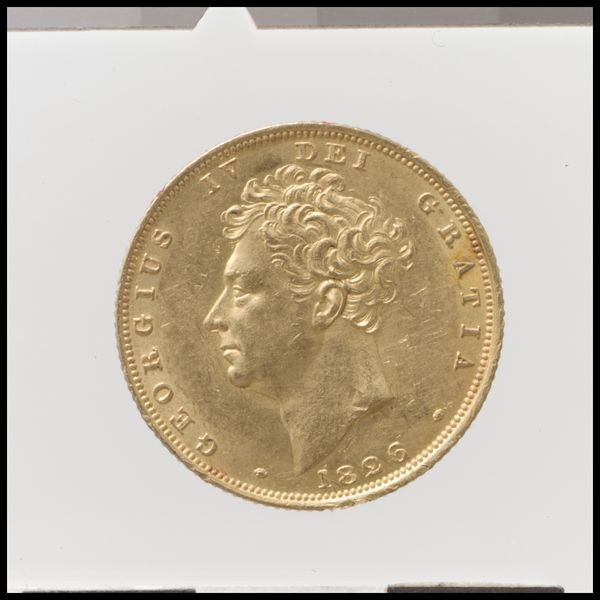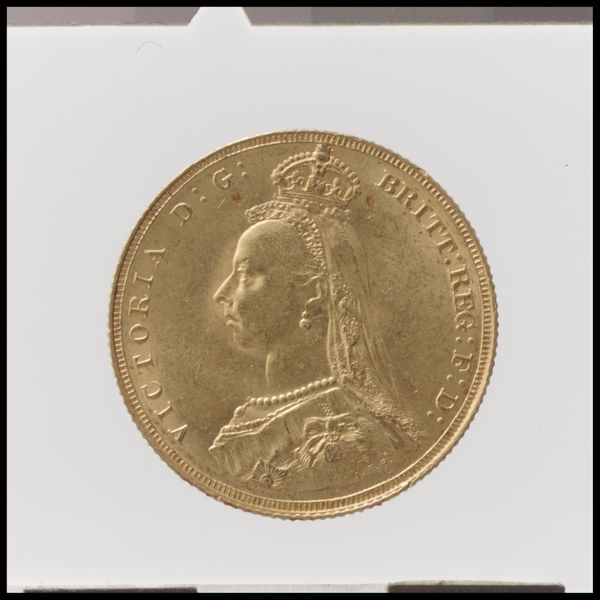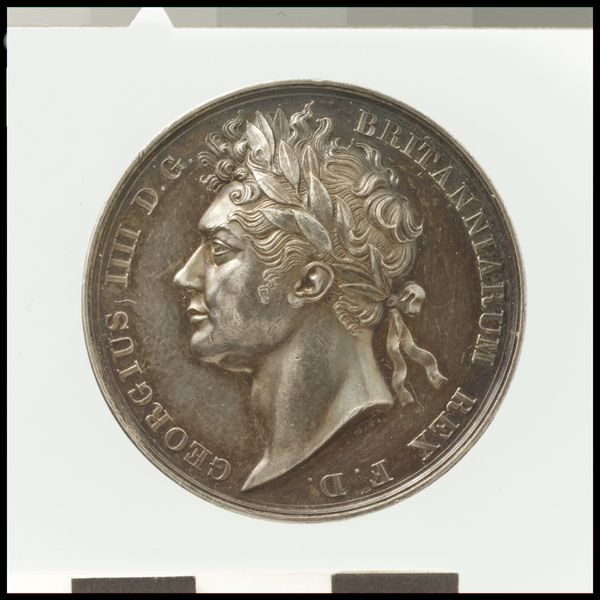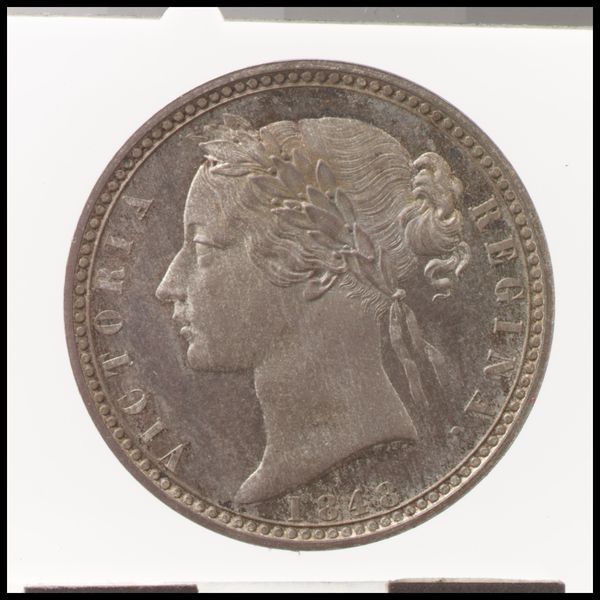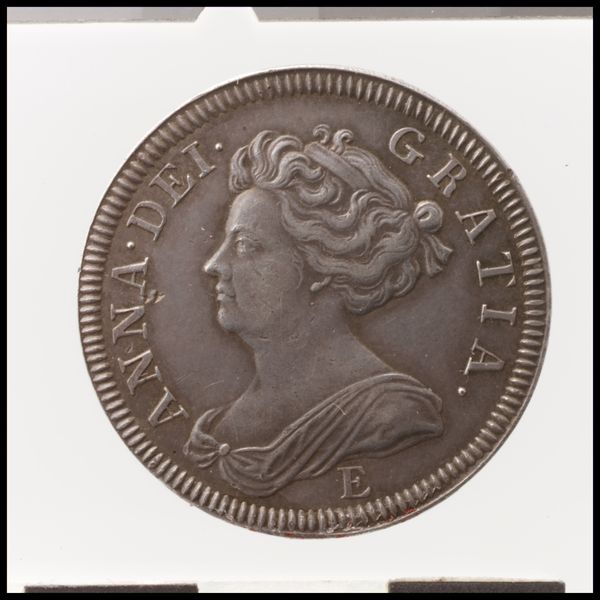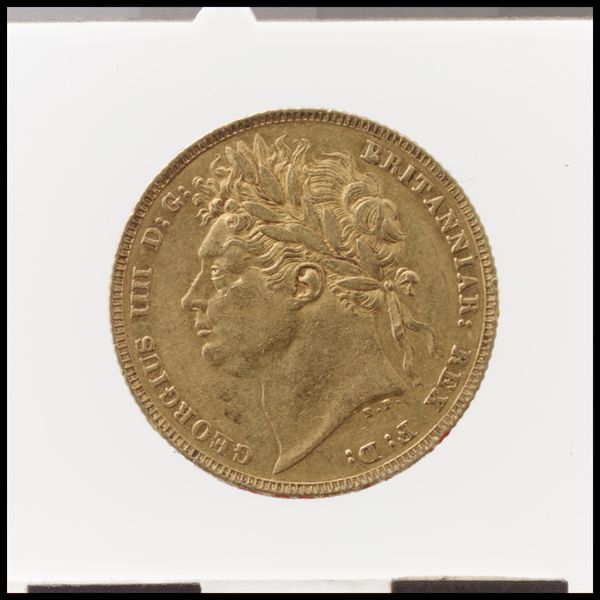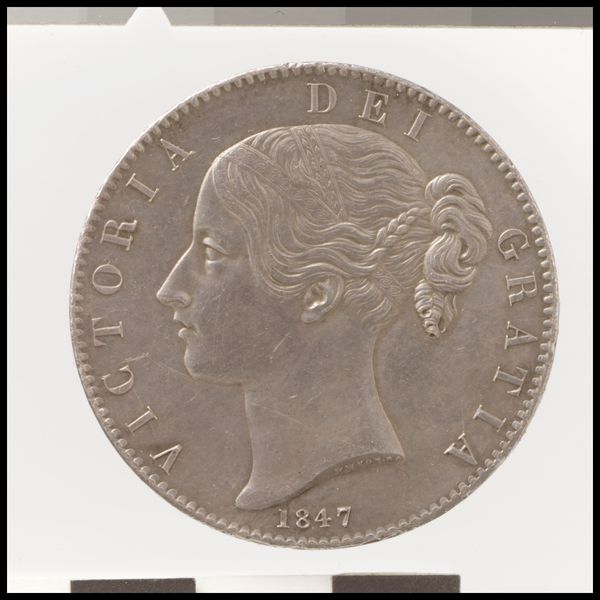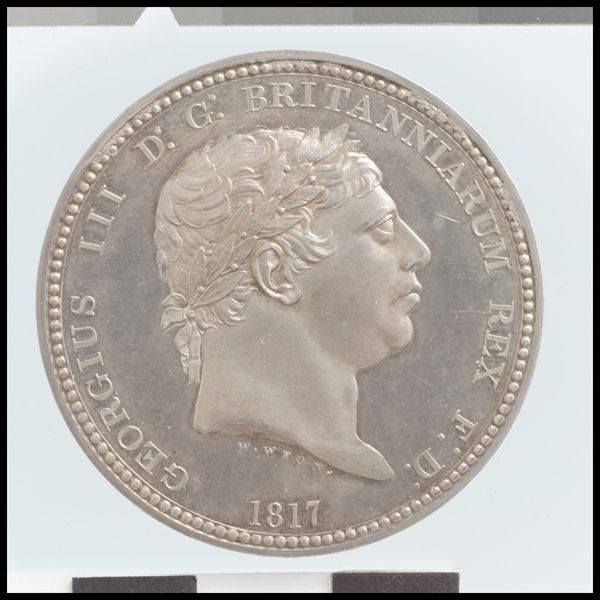
metal, sculpture, engraving
#
portrait
#
neoclacissism
#
metal
#
sculpture
#
sculpting
#
sculpture
#
carved
#
decorative-art
#
engraving
#
profile
Dimensions: Diameter: 150 mm.
Copyright: Public Domain
Editor: So, here we have William Wyon’s "George IV Crown" from 1826, residing at the Metropolitan Museum. It’s struck in a warm gold metal. I find the Neoclassical profile stoic, even a bit severe. What strikes you when you look at this piece? Curator: Immediately, the continuity of power through symbolic imagery becomes clear. The profile portrait, harking back to ancient Roman coinage, presents George IV not just as a man, but as an enduring symbol of the British monarchy. This isn’t simply a portrait, it’s an icon. Editor: An icon of monarchy, certainly. But does the very act of portraying a person on currency, thus elevating them to that near-mythical status, carry some psychological implications, especially regarding national identity? Curator: Precisely! It reinforces a cultural memory, projecting stability and permanence. Currency, after all, passes from hand to hand, constantly reinforcing that image, that idea. Look at the laurel leaves intertwined within the portrait's engraving. What do those signify? Editor: Traditionally, laurels signify victory and triumph… making him seem almost…godlike? Curator: Indeed! And consider how the engraver rendered George's hair -- those defined curls. They connect him visually to the idealized figures of antiquity, aligning his reign with a golden age. The intent, subconsciously or consciously, is to legitimize and reinforce his power through carefully chosen symbols. What do you make of the coin's inscription, the text that surrounds George's portrait? Editor: Well, the text indicates he's king "by the grace of God," again suggesting his right to rule is divinely ordained and unquestionable. I had not noticed all the visual queues. It really speaks volumes about how even something small like a coin can transmit potent messages about leadership and authority. Curator: Exactly. It's fascinating to see how historical and psychological forces intertwine in seemingly simple objects, constantly shaping our perceptions and beliefs.
Comments
No comments
Be the first to comment and join the conversation on the ultimate creative platform.


